The First Mole
We find a taco spot in the market that had a line. Two people get up, we sit down. We order dos carne de res y dos carnitas and the tacos are just what we need, so we order another round. Cilantro, cebollas, con todo, two types of salsa, and pickled onions. Two guys—one making tortillas, the other filling the tacos, slinging for everyone who sits down in front of them. A group of children dressed in costumes come by and dance and sing while we eat, and we give them a handful of pesos.
We’re walking around Mercado de Abastos when Jim gets a call. We hadn’t really made plans for the trip; we just figured it would unfold itself. Jim brought a small amount of money he raised selling his zine—money to give to people devastated by the earthquakes earlier in the year, the terramotos. He’d made a connection to Bricia Lopez’s family, who had started a relief fund called Por Oaxaca after the earthquakes in September. They had invited us over for dinner and were sending someone to pick us up.
Mercado de Abastos is the biggest market in Oaxaca City, and it’s a reasonably calm and warm day. Strolling through the labyrinth aisles, we spy chiles and butcher shops, and we pull up to someone making chocolate, put our hands under the working molina, and eat warm, fresh chocolate like Augustus Gloop drinking from a chocolate river. Jim is busy firing off rounds of photos, and I have to keep track of him because I walk fast and he gets lost chasing after the light. Patchwork tarp ceilings let beams of sunlight find their way into the market stalls, and he attacks them with his shutter. Abuelas older than time break down sugar cane and sell fruits and herbs that even I am unfamiliar with.
We are supposed to meet Fernando at a bakery in fifteen minutes, so we buy some nispero, a type of loquat, to bring to our hosts. The nispero are perfect, bright orange, and still attached to the branches, sweet and balanced with delicate soft flesh. With large seeds in the middle like tumbled rocks, we spit them on the dirt floor. We walk in the direction we think is the right way, back toward the Zocalo.
Fernando—our driver, our host—is Bricia’s father; they have a family restaurant in Los Angeles called Guelaguetza—probably the most well-known Oaxacan restaurant in the United States. He tells us we’re going to Mitla, a small village where their house is about an hour away. We pile in the dusty red Jeep Liberty and take off. Fields of agave and mezcal palenques line the roads along the way. We ride with the windows down, warm air and smoke whips in, and I think about how lucky I am right now.
We make a pit stop at a lumber yard, where Fernando buys the wood to build houses for Por Oaxaca. Five hundred dollars buys a house for those in need. Oaxaca City saw some damage, but some villages were almost completely destroyed. Fernando tells us that because of the terramotos in Mexico City, Oaxaca hasn’t received the focus and aide that it needs.

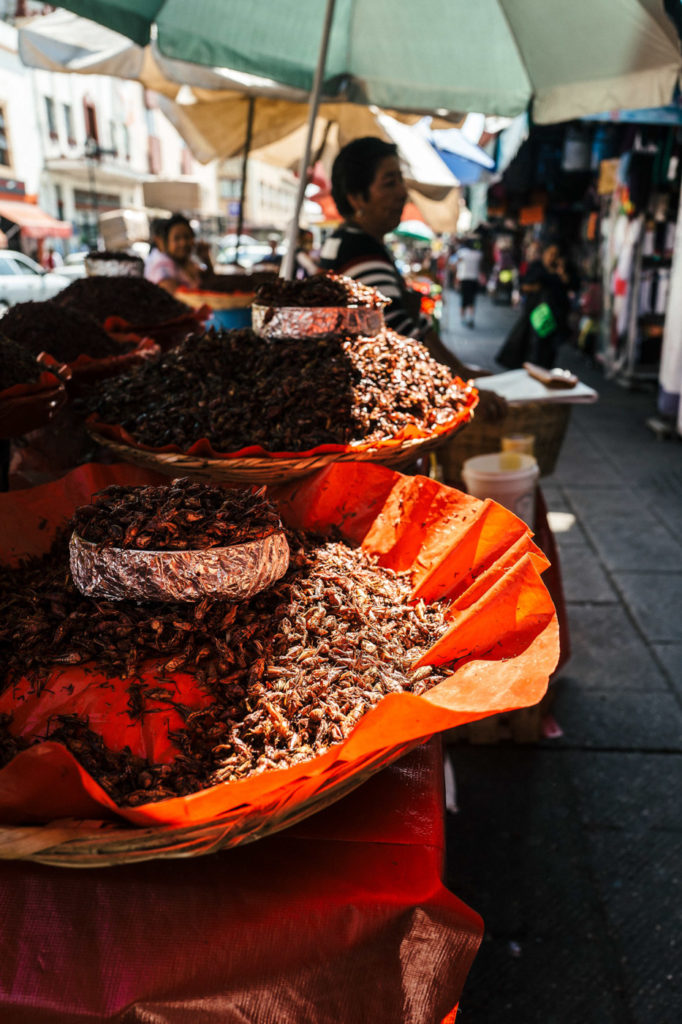
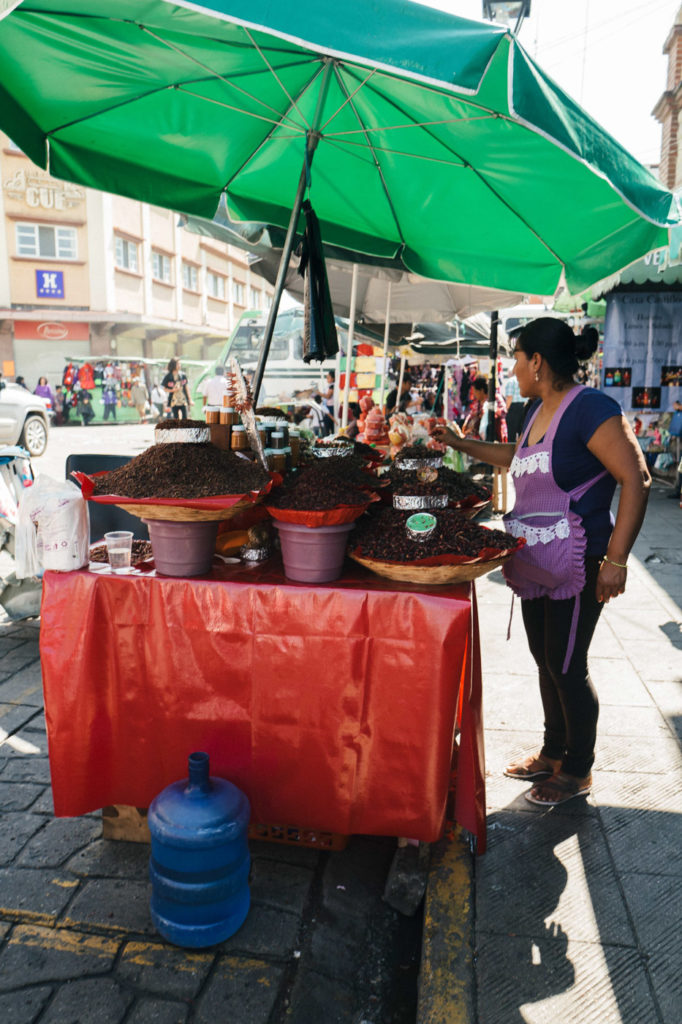
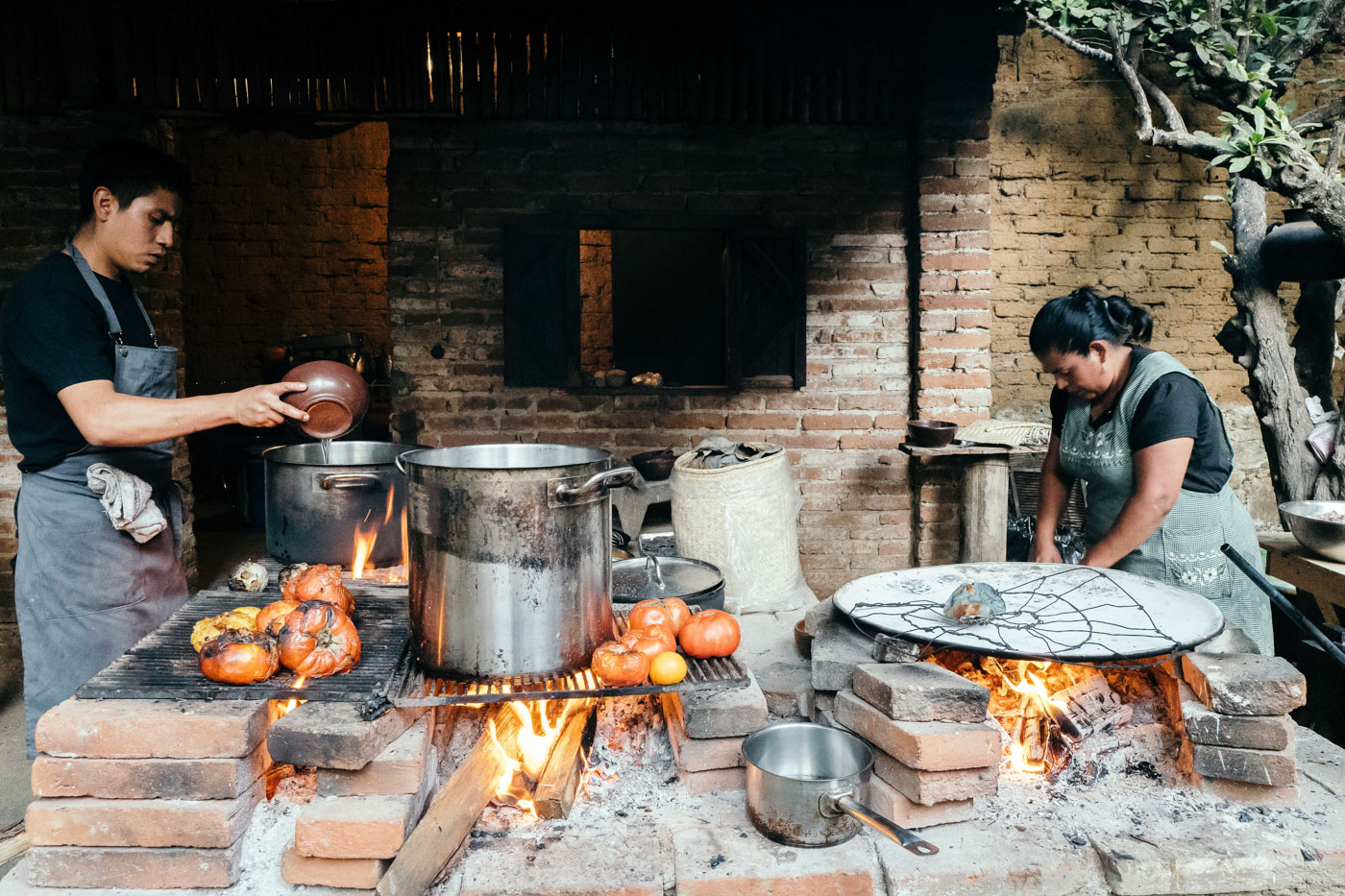
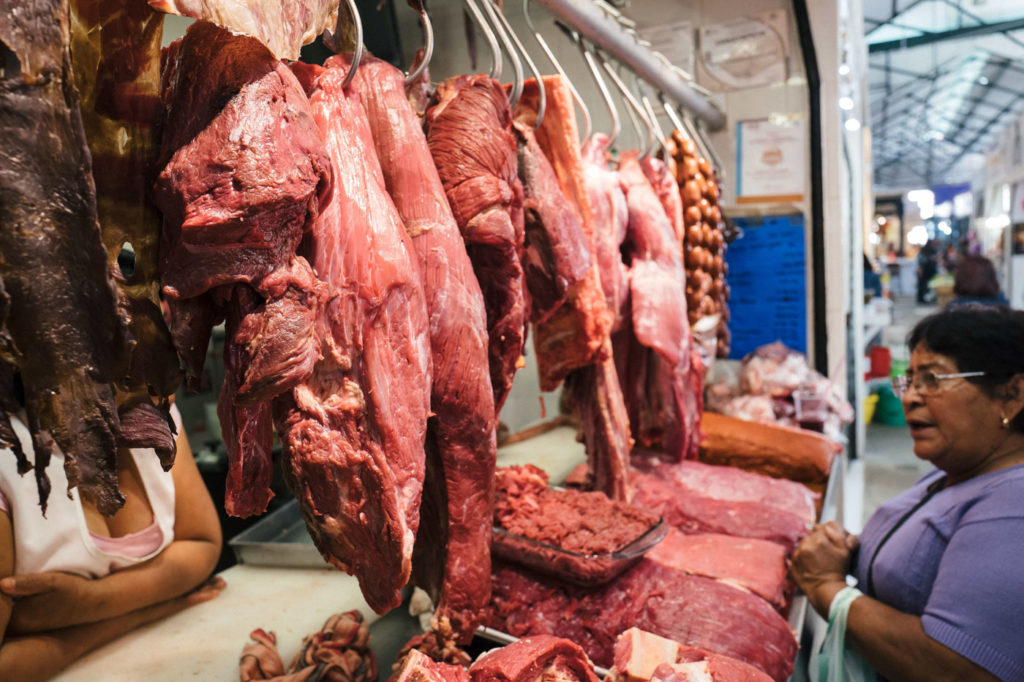

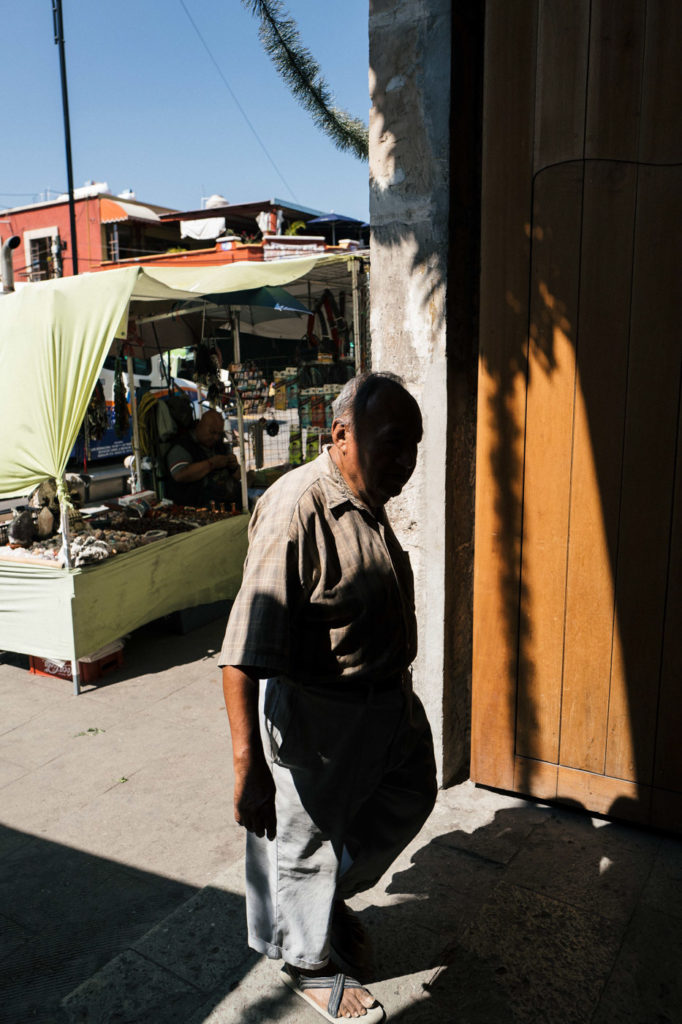
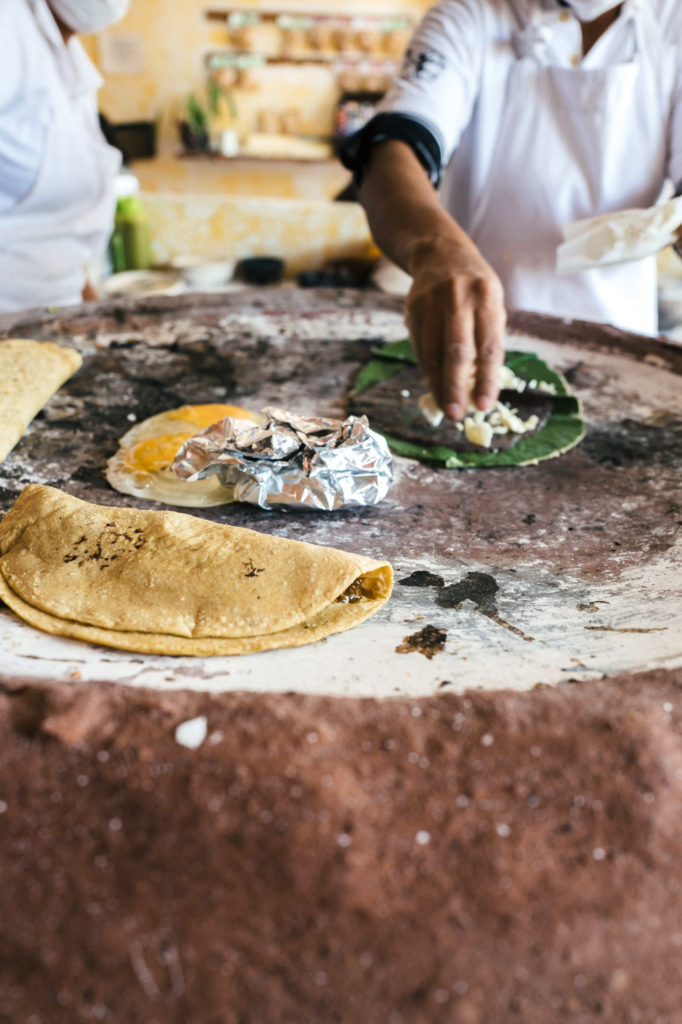
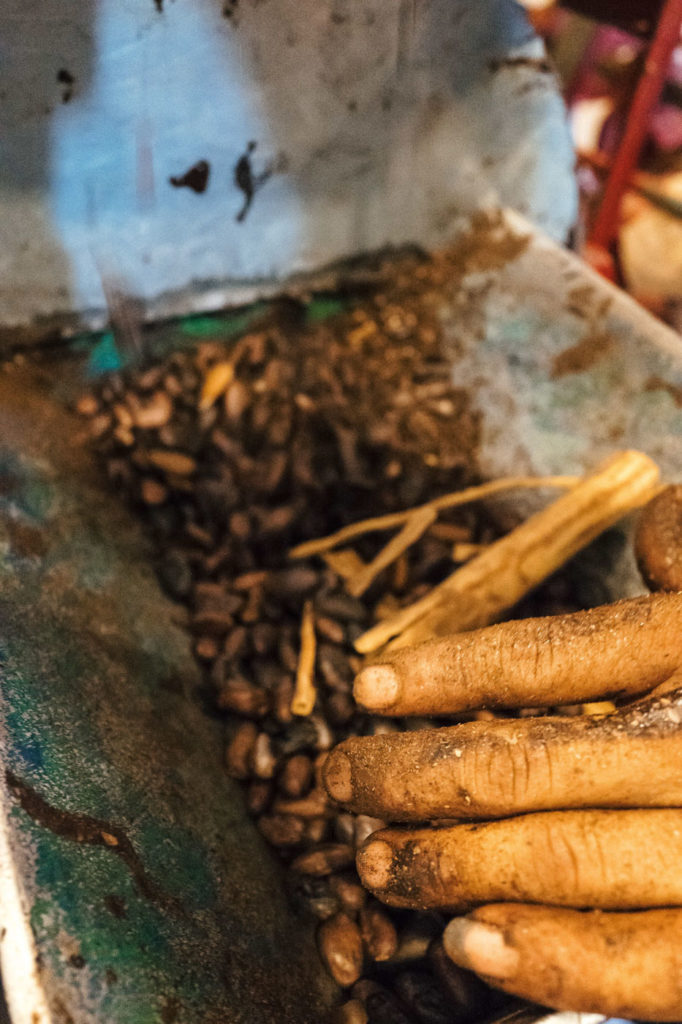
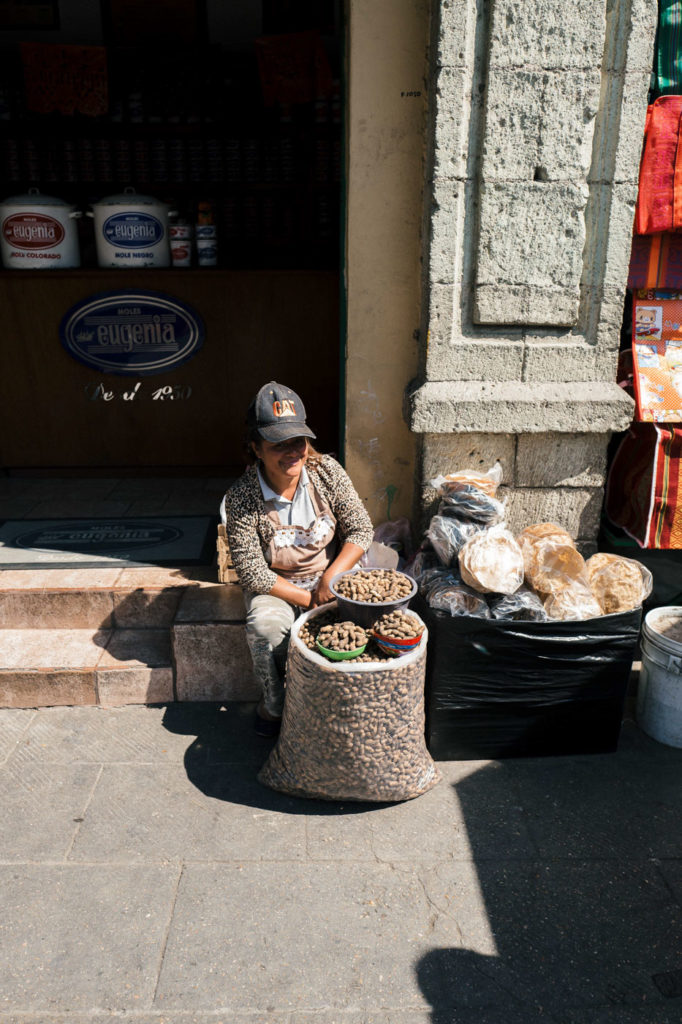
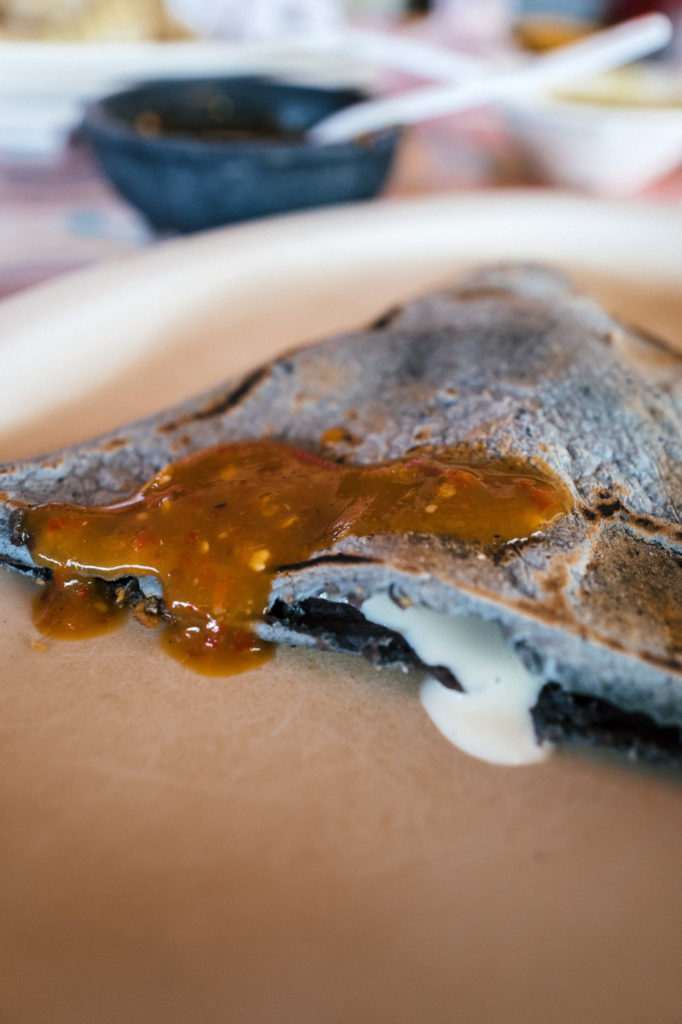

The Lopez’s home is beautiful and warm, with dogs that run around and lick at our hands. Maria, Fernando’s wife and matron of the house, has made mole, turkey and rice. She tells us how everyone makes mole today, how everyone collects their ingredients and takes them to the local molina (miller), to have them ground, how every house’s recipe is different, and how the line for the molina stretched around the block. We are the only guests today for this mole, for this feast.
Her mole is silky and black and sits on the stove in a large rondeau with an oversized spoon for stirring. I taste a bit. The sauce is deep, rich and clean, and I feel happy to be alive. We’re seated on the patio, looking onto the garden with the mountains behind it. They serve us bowls of drinking chocolate and humongous pieces of pan de muerto (bread of the dead). We’re instructed to dip and enjoy them together. More bread is brought—more than a hungry person could eat. A bowl of turkey consommé with rice and cilantro, so nourishing and delicious, are served; Jim and I finish the bowls. Fernando opens a bottle of mezcal given to him by a friend of his at Montelobos. The bottle doesn’t have a label, but the blend is written in Sharpie on the bottle. Oranges, sal de gusano, and a sal de hormigas.
The broth is cleared and replaced with mole and rice. They were raising two turkeys and killed one for this meal; the other, still wandering around the property, is reserved for Christmas, when their kids will come home. I feel like like a neighborhood kid, brought in from the streets to be fed. The mole is classical—toasted, but not burnt chiles, with subtle sweetness—not so much about the chocolate, but about balance and harmony and whispering spice and tradition. Maria tells us how she taught Bricia the recipe, which was passed on to her by her mother.
Once we finish our plates, we are told we will visit two relatives houses before being returned to Oaxaca City. The tradition is to visit family and friend’s homes this evening, to celebrate the dead, and catch up with the living. Each makes their own moles and guests bring ofrendas and decorative pan de muertos to be placed on the houses’ alters, and everyone is served a plate of food, with maybe some tea or mezcal.


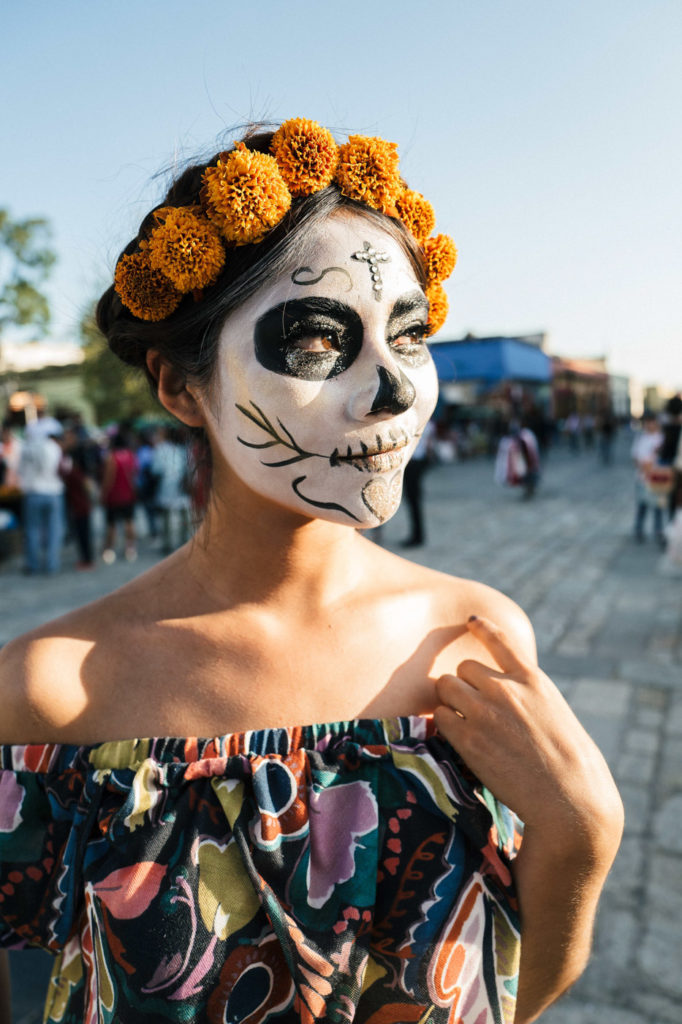
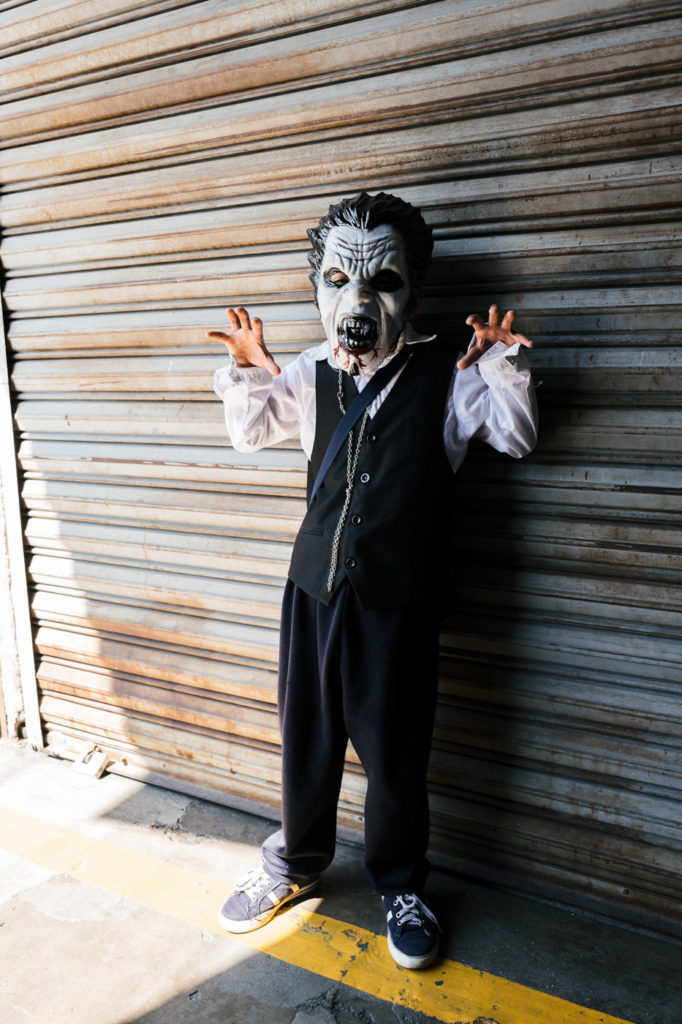

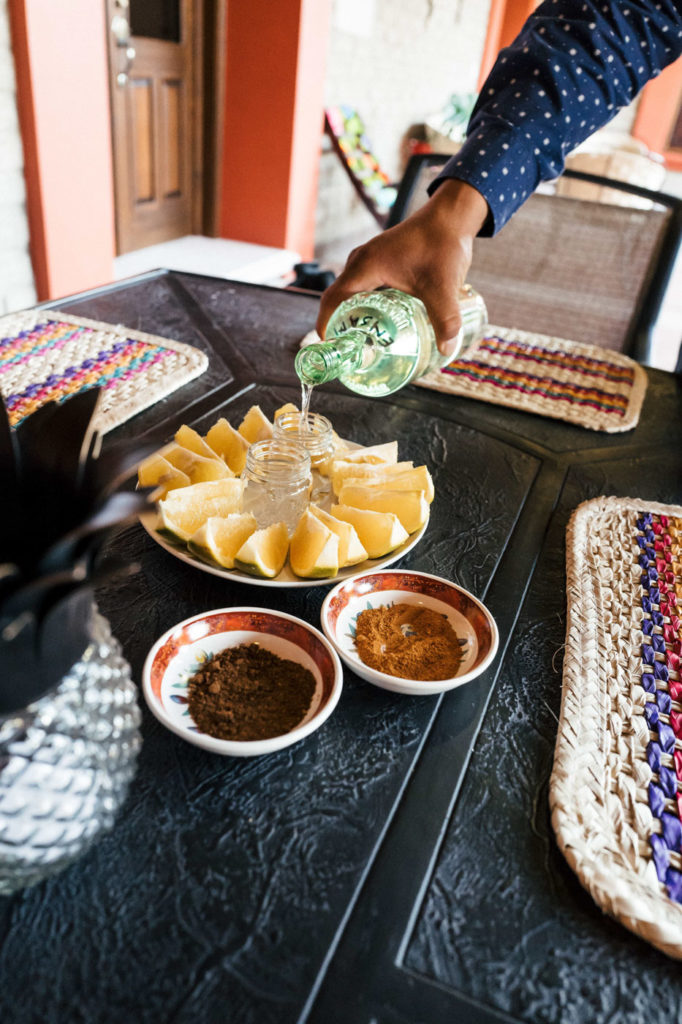

The Second Mole
The house we are taken to is Fernando’s childhood home. In the entryway is a large marigold arrangement, and behind it a crack in the wall stretches down; I’m unsure if it was from the earthquake or merely from time. Inside is a mix of family and friends; we are the guests, although we are welcomed as family—as an extension of the Lopez family. The alter at the center is the focus of the room. Large and tall, with pictures of family long departed, but all remembered with their favorite drinks, with a plate of mole, with fruit, and with many breads.
Jim and I sit down quietly at the communal table and are served another mole with chicken. This mole is more broth-based and savory. It has less chocolate, less depth, and almost a gelatinous character to it. I wonder if corn starch was used as a thickener. The house has formal servers and no one seems to claim that they made the mole. It is still delicious, and I enjoy every bit of it, now far beyond full. At the table near us, there is an Argentinean chef telling us he has relocated to Oaxaca, and a girl who is writing her master’s thesis on mezcaleros and mezcal. A golden mezcal is poured for us. The family owns some part of the distillery and it is simple—an introductory mezcal.
The servers bring us a plate of sweets, tea, and fruits that have been cooked in agave syrup. We’re not sure what any of them are, sticky and sweet with the hay-like flavor of the agave. We can hear the campanilles, ringing in the evening air. An old man joins the table—Antonio Hernandez Lopez. He sets down a bottle of mezcal, and the girl and her boyfriend exalt the man with praise; he is a mezcalero who doesn’t have a label or brand, but is locally revered. We are poured a small vaso of his mezcal and savor it. He is old and gristly; his hair is white and his skin leathered, and his hands and fingers are clubs that know the pleasure of field work. He speaks with a bubbling rhythm and everyone, still seated at the table, listens in.
Goodbyes are made and we finish our glasses, the bells still ringing in the background.

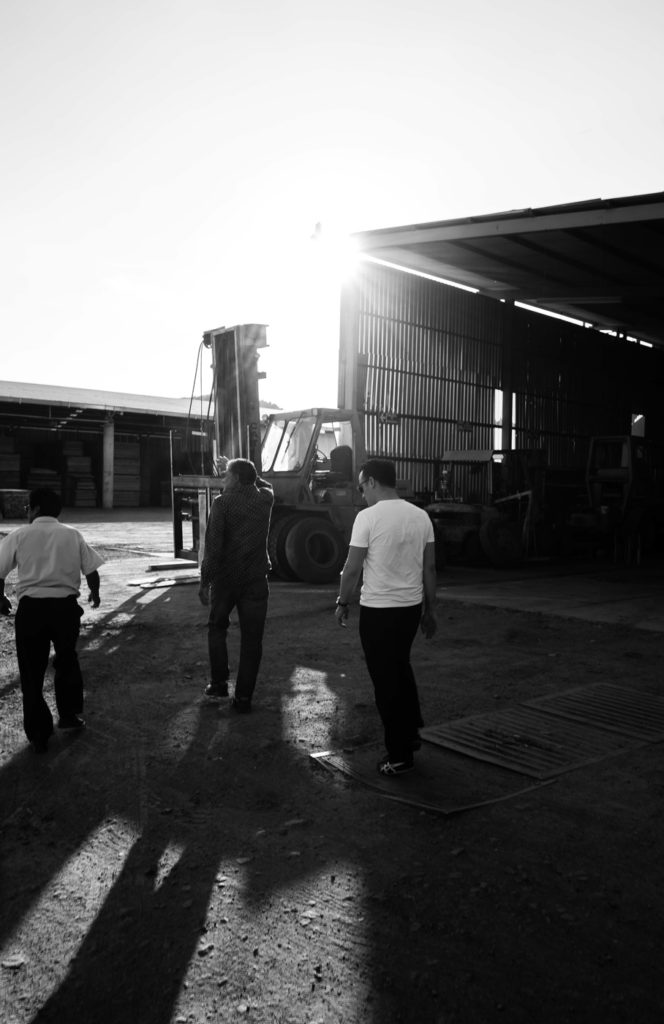
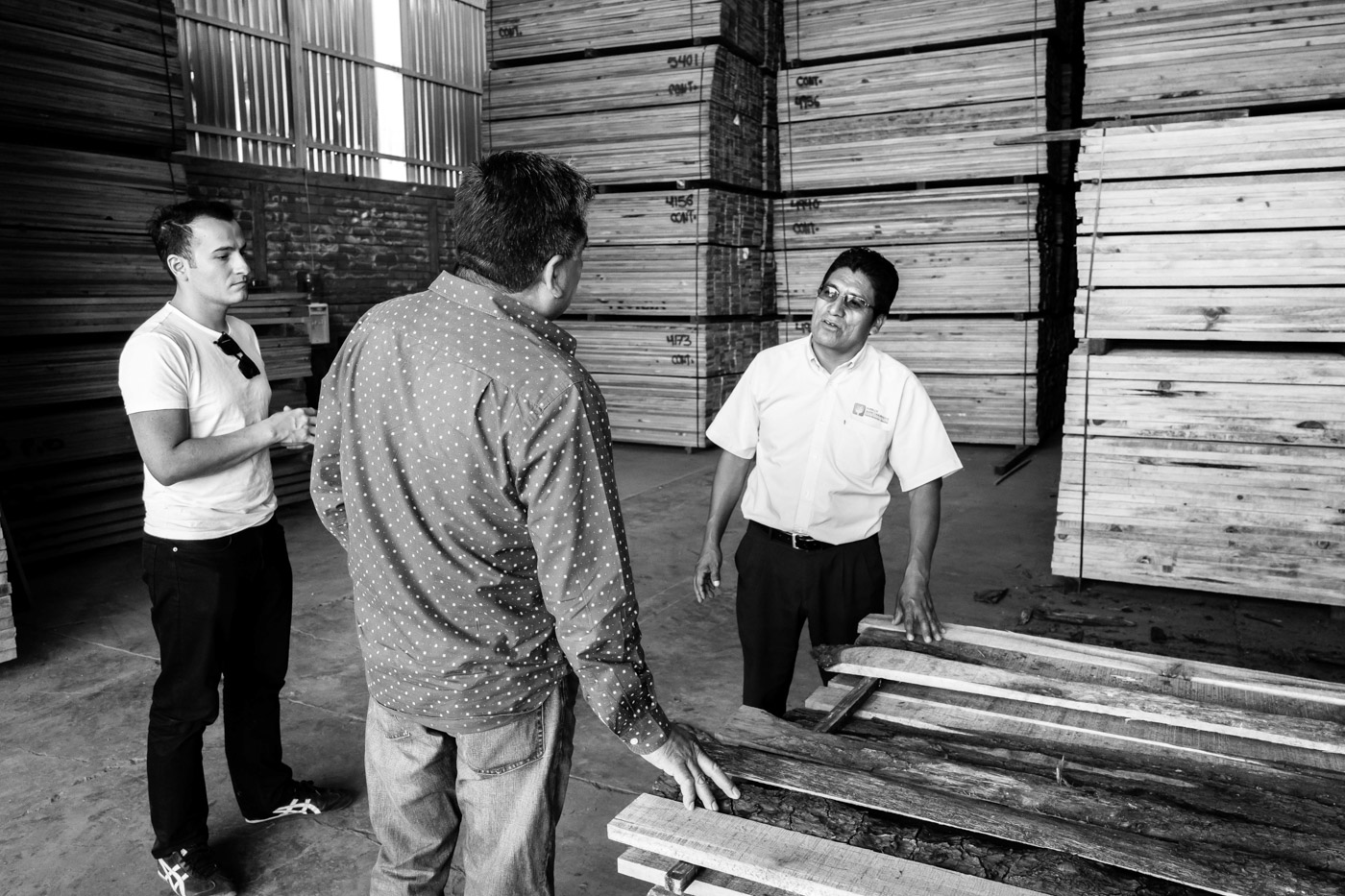
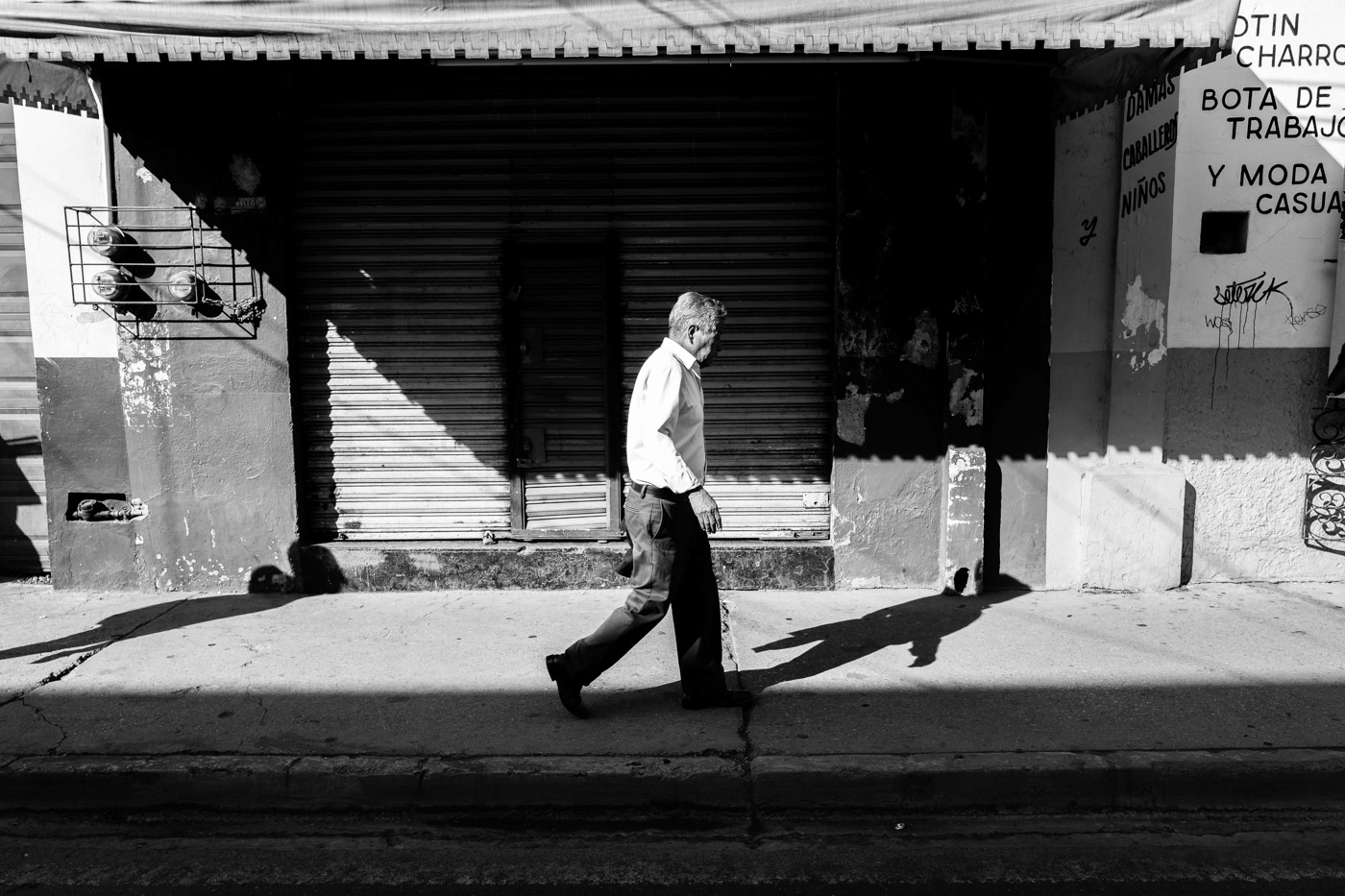
The Third Mole
This is a quiet celebration. The house is dark when we arrive. A long table lines one wall of the courtyard area where people are congregated, and the altar is in the corner. The father of this family has passed away in the previous year. Everyone kisses and says hello, and we are introduced as friends and welcomed once again. The mother sits close to the altar where she greets us.
I walk with Maria Lopez to the altar. Maria is dressed in a silken pink and orange blouse, a green dress, short black hair with sandaled feet. She carries a woven basket with bread and flowers and sets them down where there is space. Photos and candle light on the foot of the altar flicker with memories and the raw emotion still being transmitted from the living to the dead.
A rondeau of mole cooks on the ground, propped up by concrete blocks, with wood burning underneath. The mole steams and bubbles in the dark night. At a modest table, the daughter of the family serves us. Mezcal from a distillery, again somehow connected to the family, is served in small disposable cups. The son of the deceased sits at the end of the table. Having mourned too heavily with the mezcal, he speaks but is mostly ignored. The mother is quiet and describes how she had been too tired to make the mole this year and has passed on the recipe to her daughter. The daughter was nervous of her first attempt.
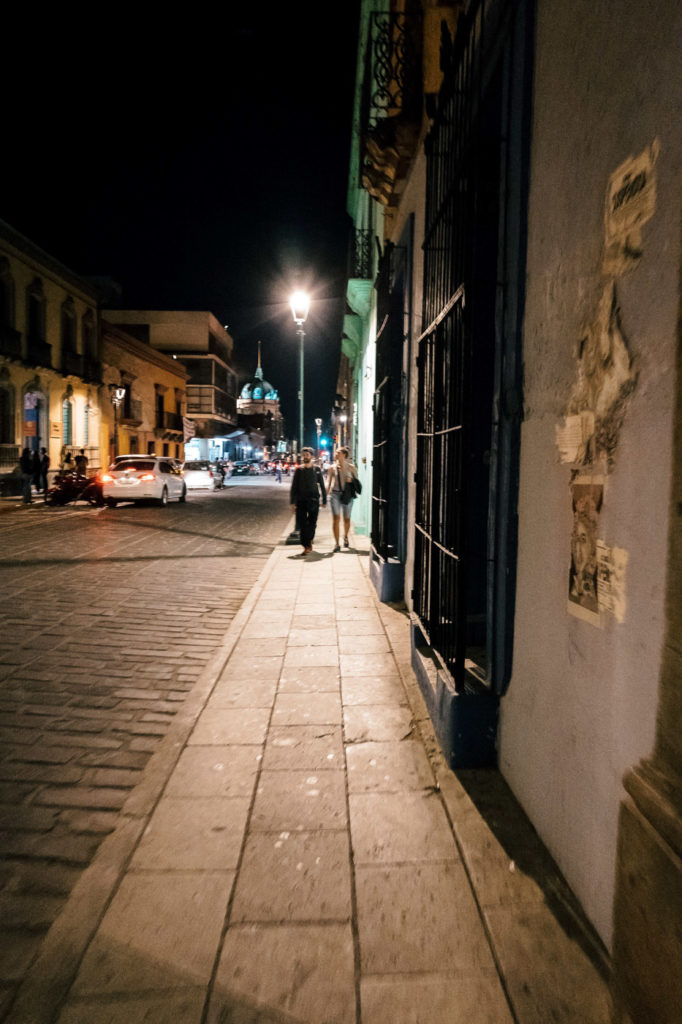

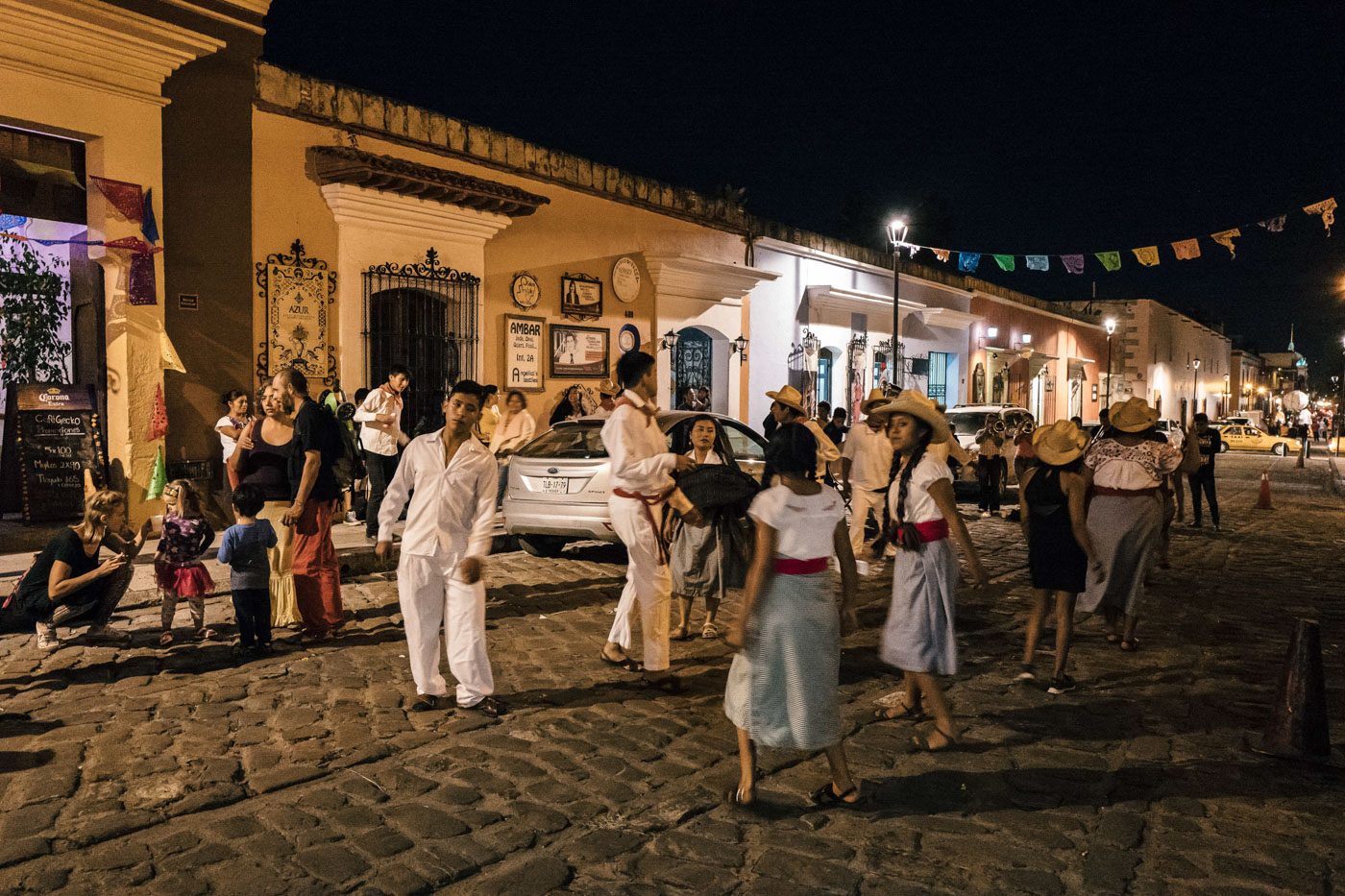
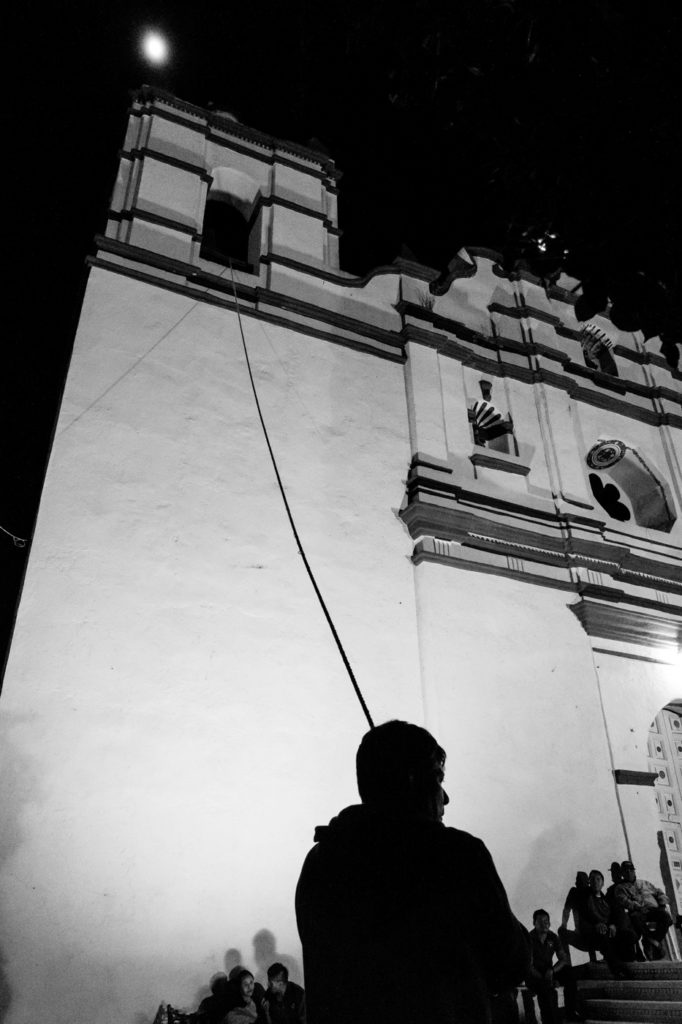
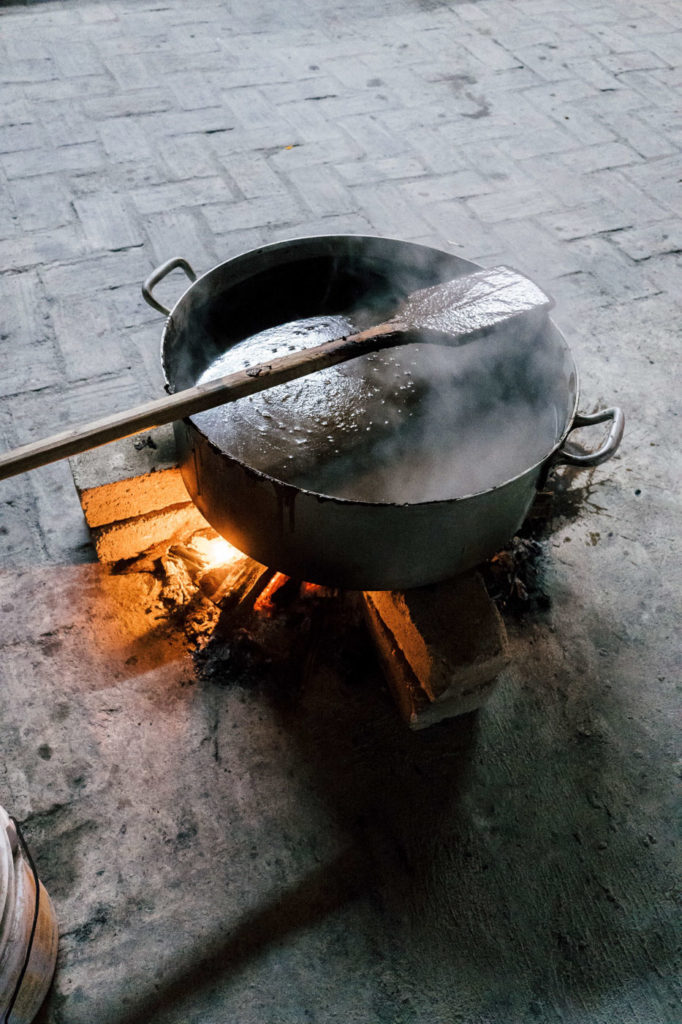
On a plastic table cloth, in a rose-patterned china bowl, she serves us turkey in mole. Tlacoyos (large tostadas) are to be dipped in the sauce. She has used around a dozen different chiles, and her mother approves. The mole is deep, complex, spicy, rich and smokey. I hope that someday, everyone has a chance to taste something made with this much emotion. It’s bitter and alive, and absolutely incredible.
Leaving Mitla, we stop at the church in the zocalo, where the campaniles are located. A neon cross stands above the old church and a rope tied to the bell is draped to the ground. Anyone is allowed to ring it. A group of young men sits on the stairs leading to the church, drinking beers and listening to cumbia music on a stereo. A fire has been made in a wheelbarrow. It’s close to midnight and the clang of the old campanile can be heard all over the city. We take turns ringing the bell. Finally, Fernando takes the rope. He rings the bell and he puts more effort into it. He rings the bell and he rings the bell and he rings the bell.
Val M. Cantu is the chef and owner of Californios restaurant in San Francisco’s Mission district. At Californios, Val has amassed Two Michelin Stars and Four Stars from the San Francisco Chronicle, as well as being named one of Food & Wine’s Best New Chefs in 2017.





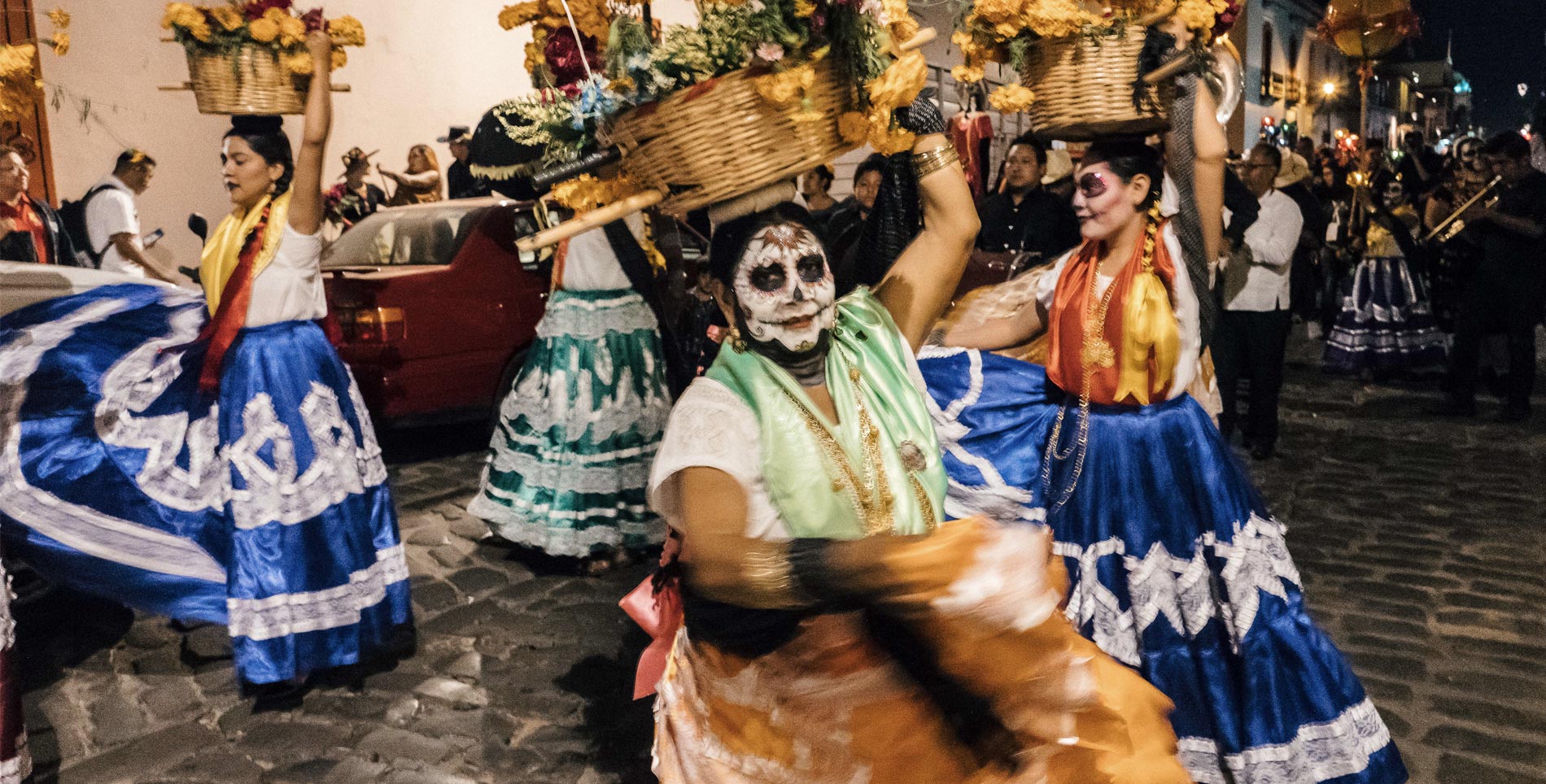

Our comments section is for members only.
Join today to gain exclusive access.